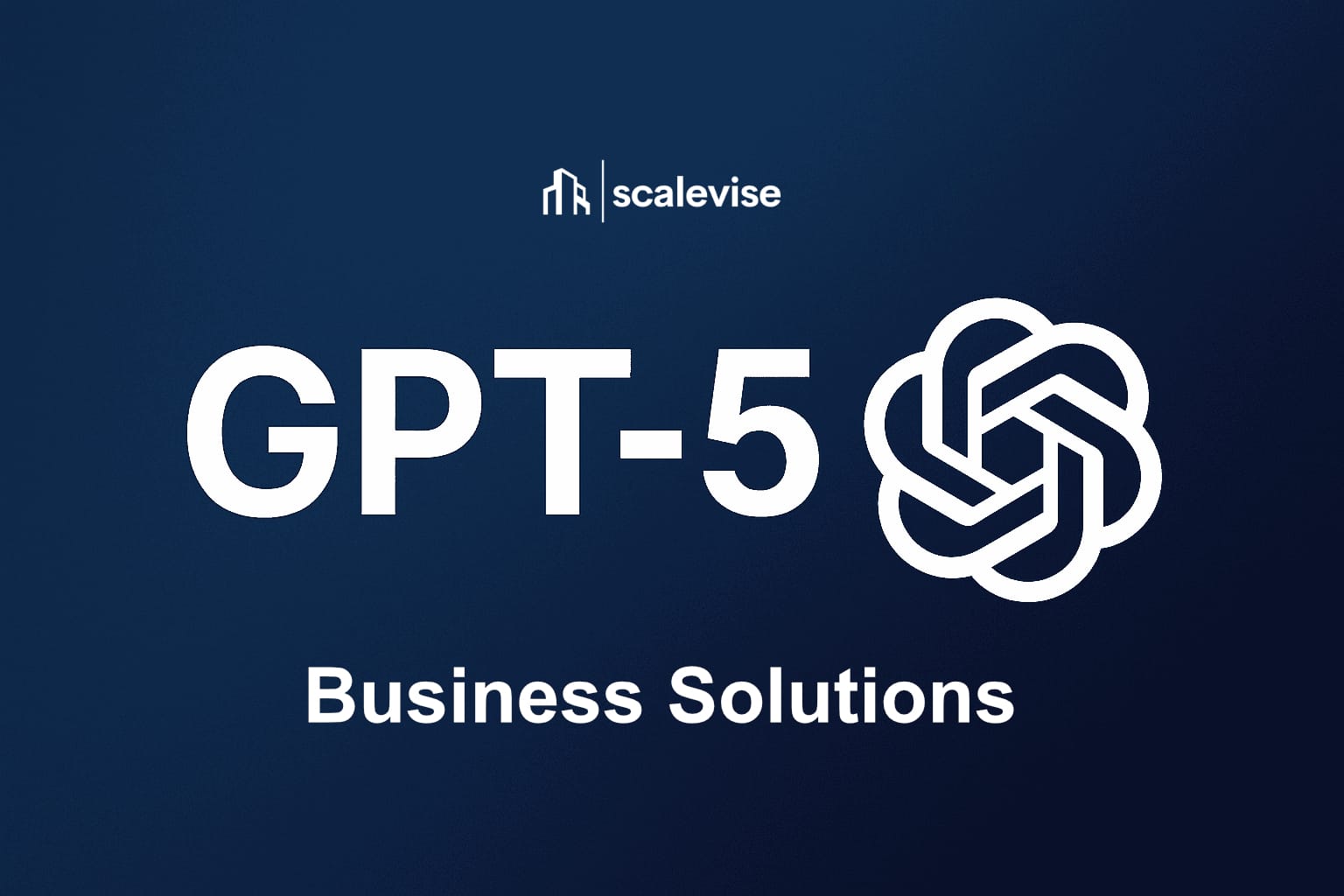GPT-5 and Business Solutions: A New Era of Intelligent Automation

GPT‑5 is more than a smarter chatbot it’s a strategic AI engine ready to drive business outcomes, automate decisions, and act like an autonomous assistant.
Why GPT‑5 Is a Game-Changer for Businesses
With the arrival of GPT‑5, OpenAI introduces a leap forward in enterprise-ready AI. Unlike earlier models that only responded to prompts, GPT‑5 thinks, reasons, and acts — all in one unified model.
Key capabilities:
- Advanced reasoning with fewer hallucinations
- Multimodal input and contextual memory
- Agentic workflows: from answering to doing
- Deep integration potential across business systems
For businesses, this means moving from passive AI tools to active AI agents that solve real problems.
How GPT‑5 Compares to Earlier Models
| Feature | GPT‑4 / 4.5 / 4o | GPT‑5 |
|---|---|---|
| Reasoning Power | Linear prompts | Multi-step logic and planning |
| Hallucination Rate | Moderate | Significantly reduced |
| Input Types | Text, vision, basic audio (4o) | Text, voice, image, video (rumored) |
| Agentic Capability | External tools required | Native task execution built-in |
| Enterprise Readiness | Moderate (via APIs) | Full-stack integration ready |
Use Case 1: AI Project Manager
Imagine a GPT‑5 agent that:
- Reads project specs
- Breaks tasks into subtasks
- Assigns responsibilities
- Sets deadlines based on priority
- Tracks progress via tools like Jira, Notion, or Slack
This isn’t future fiction. It’s real and deployable in GPT‑5 with the right data context.
Also See: Persistent Memory in GPT-5
Use Case 2: Customer Support Automation
With GPT‑5:
- Responses are not generic but based on your own KB/CRM
- It understands tone, urgency, and history
- It can summarize chats, detect sentiment, and escalate when necessary
Companies can cut first-line support costs by up to 60% while improving CX.
Use Case 3: Financial Report Generator
GPT‑5 reads raw financial exports and:
- Classifies line items
- Generates management reports
- Identifies anomalies
- Suggests budget reallocations
Ideal for CFOs, controllers, and finance teams managing multiple cost centers.
Why GPT‑5 Will Reshape How Companies Operate
While most business leaders are familiar with AI as a buzzword, GPT‑5 introduces something much deeper: operational intelligence at scale. Instead of just automating tasks, GPT‑5 enables reasoning, prioritization, and action within complex business systems—without always needing human validation.
Take, for example, a B2B SaaS company struggling to keep up with customer onboarding. With GPT‑5, they can deploy an AI agent that reads product documentation, understands customer personas, and crafts customized onboarding flows in minutes—not weeks. This goes far beyond simple scripted bots or chat support. We're talking about real-time adaptation and optimization based on user behavior, CRM data, and performance metrics.
Another powerful example is internal knowledge retrieval. Enterprises often suffer from data silos: tribal knowledge hidden in Slack threads, PDFs, and undocumented workflows. GPT‑5's multimodal understanding (text, image, and potentially video) makes it the ideal candidate for internal AI knowledge agents. Employees can ask natural language questions like "What’s our refund policy for enterprise accounts over $10K?" and get actionable answers—pulled from emails, contracts, and internal portals—all within context.
And unlike earlier models, GPT‑5 doesn't need constant prompt tuning. Its context length and comprehension are robust enough to handle messy, real-world data sources. You can point GPT‑5 at your Notion pages, Confluence wiki, or even recorded Zoom calls, and it will extract relevant insights, summarize meetings, and generate action items that plug back into your workflows via tools like Asana, Slack, or Salesforce.
Where the True Business Value Lies
The real edge GPT‑5 brings is not just automation—it’s strategic augmentation. Instead of replacing employees, it makes teams faster, more focused, and capable of handling exponential workloads without burning out.
Here’s how:
- Middle management can rely on AI agents to track KPIs, monitor risks, and surface team blockers proactively.
- Sales teams can move beyond CRM data entry and focus on actual relationship-building while AI agents handle research, outreach personalization, and call summaries.
- Legal departments can delegate first-pass contract reviews to GPT‑5-powered agents, speeding up deal cycles without compromising compliance.
This evolution from tool to teammate is subtle—but monumental.
How to Deploy GPT‑5 for Your Business
- Define a single use case with measurable ROI (e.g., automate monthly reporting).
- Collect structured data and knowledge sources.
- Use ChatGPT Plus or OpenAI API with your prompt logic.
- Add automation logic via Make, Zapier, or direct integrations.
- Monitor output quality and fine-tune.
Why It Matters
GPT‑5 isn’t just another upgrade. It represents a shift in how businesses interact with AI. We’re moving from chat-based tools to real-time decision agents that plug into your workflows and reduce human overhead.
Final Thought
If GPT‑4 was the intern who helped you brainstorm, GPT‑5 is the COO who starts executing.
Now’s the time to explore where an autonomous AI agent fits inside your company.
Want to Get Started?
Run our AI Scan →
Discover where GPT‑5 agents can unlock growth in your business.
See our Case Studies →
Learn how Scalevise implemented custom agents for real clients.
Explore more AI Tools for Business →
GPT-5 and Business Solutions: A New Era of Intelligent Automationhttps://t.co/bmHciCFTXX #gpt5 #BusinessSuccess #BusinessOpportunities #chatgpt #openai @OpenAI @OpenAIDevs
— Scalevise (@scalevise) July 17, 2025
